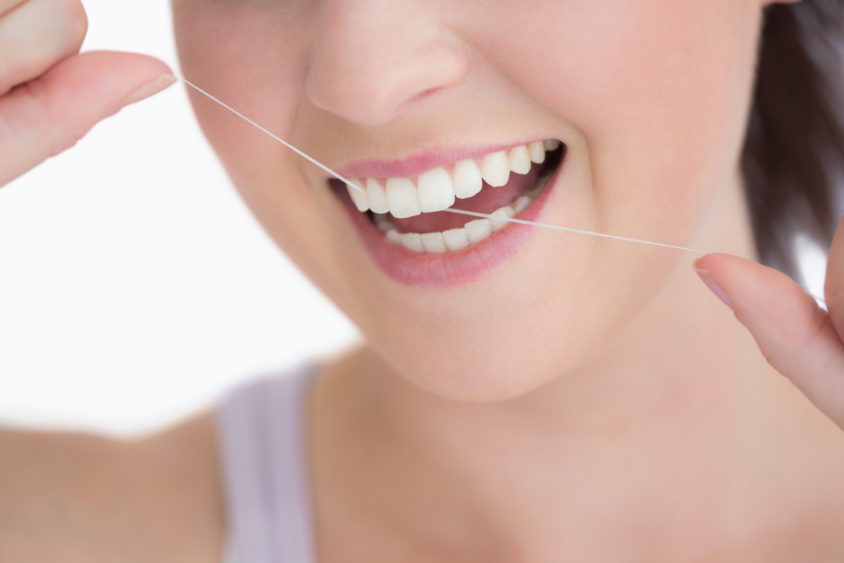With all of our incredibly busy routines these days, nobody wants to take time to add yet another chore to their list. The difference is that flossing your teeth is one of the few chores that pays big dividends in the long run, and unless you do it consistently and properly you may not reap the benefits.
Here we will talk about how to properly floss your teeth, according to the ADA.
- Step 1: Choose a PTFE (Monofilament) floss, flavored to your preference if you like. The PTFE floss is great because it can access tighter areas than the Multi-strand flosses on the market.
- Step 2: Wrap the ends of 18-24″ of floss around your middle finger on each hand.
- Step 3: Pinch the floss between your thumb and pointer finger. This will help guide the floss between your teeth, with the thumb pushing upward on your top row, and your pointer pushing down in between your bottom row of teeth.
- Step 4: Starting where ever you would like (as long as you go between all teeth), gently push the floss in between the tooth and the gum on each side. You do not want the floss to snap down, but rather gently guide it in by sliding it back and forth.
- Step 5: Once the floss is in between the teeth, you want to gently guide the floss 1-2mm below the gum line on both sides of the gum protruding upward between the teeth. It also helps to slide the floss forward and backward as you do this to help scrape away plaque and debris. Repeat for all teeth.
- Step 6: Don’t forget the backs of your rear molars. Gum disease and tooth decay frequently occur on the back teeth. It can be a little bit harder to get in there, but you shouldn’t neglect this crucial part of flossing. Gently slide the floss between your rear molars and your gums, and carefully pull both sides of the floss toward you as you agitate the area. Most gum disease and decay occurs in the back of the mouth, where fewer people floss.
- Step 7: If you already brushed your teeth beforehand, give them one more light brushing to remove the debris created by flossing.
You will want to floss at least once a day to enjoy the long-term benefits of flossing. There are several other options for flossing on the market, including floss holders, disposable single use floss sticks, and the Water-Pik. Choose what is best for you, and don’t forget to ask Dr. Klooster for a demonstration on your next visit!

